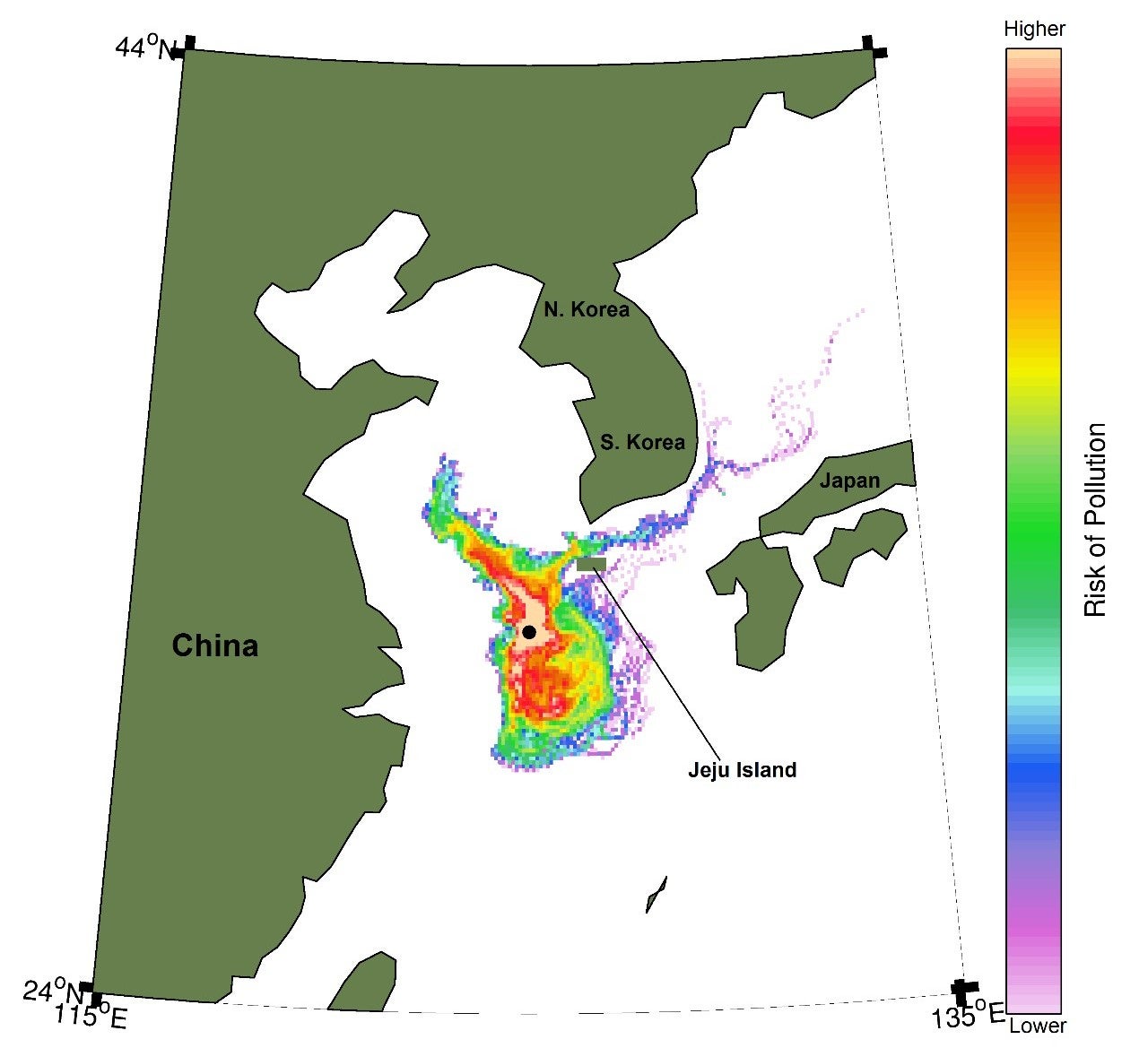A collision involving the Sanchi — shown being doused at right before it sank — created what appeared to be the largest tanker oil spill since 1991.
Environmentalists and marine experts are concerned about the oil slick’s threat to sea and bird life in the East China Sea.
CreditTransport Ministry of China, via European Pressphoto Agency
From NYTimes by Gerry Mullany
An oil spill from an Iranian tanker that sank in the East China Sea is rapidly spreading, officials said Tuesday, alarming environmentalists about the threat to sea and bird life in the waterway.
The tanker, the Sanchi, was carrying 136,000 tons of highly flammable fuel oil when it crashed into a freighter on Jan. 6.
On Sunday, the Sanchi sank after a huge blast sent up a great plume of black smoke and set the surface of the water on fire, China Central Television said.
The bodies of three crew members have been recovered, and the remaining 29 were presumed dead, the Iranian government said.
Thirty Iranians and two Bangladeshis were believed to have died.
The burning Iranian oil tanker Sanchi is seen partially sunk in the East China Sea
off the eastern coast of China on January 14.
The oil slicks from the sunken tanker were growing in size, China’s State Oceanic Administration said Tuesday.
There are now two huge slicks covering 52 square miles, compared with just four square miles the previous day.
Strong winds were pushing the spill toward Japan, away from China, and it was now less than 200 miles from Naha, Japan.
One concern is that, since the Sanchi sank, marine life will be endangered by the fuel oil’s spreading instead of burning off.
And experts are further concerned that the even dirtier bunker fuel powering the tanker will be released into the sea, exposing delicate marine life to the extremely toxic substance.
Greenpeace expressed alarm about the threat to the marine ecosystem in the East China Sea, which is one of the world’s most heavily trafficked waterways, saying the disaster occurred in “an important spawning ground” for fish.
“At this time of year the area is used as wintering ground by common edible species such as hairtail, yellow croaker, chub mackerel and blue crab,” Greenpeace said.
“The area is also on the migratory pathway of many marine mammals, such as humpback whale, right whale and gray whale.”
The tanker was carrying more than one million barrels of condensate, an extremely light crude oil, to South Korea when it collided with the freighter.
When spilled, the condensate can produce a deep underwater plume damaging to marine life.
File photo shows a rescue ship sailing near the burning Iranian oil tanker Sanchi
photo AP
The Japanese Coast Guard said the fire on the surface of the sea was extinguished early Monday.
The Sanchi disaster appears to be the largest tanker spill since 1991, when an unexplained detonation caused the ABT tanker to leak 260,000 tons of oil off the coast of Angola.
Rick Steiner, a marine conservation specialist formerly with the University of Alaska, told The Associated Press that 60,000 to 90,000 tons was likely to have spilled into the sea, calling it “enormous” and “as large as the official estimate of the Exxon Valdez disaster” off the coast of Alaska in 1989.
He also suggested that the Chinese government was likely to be understating the magnitude of the spill.
Oil spill from the submerged Iranian oil tanker off East China coast is expanding, and will spread northward due to wind and sea currents, a statement from China’s State Oceanic Administration warns on Monday (Photo via Xinhua) pic.twitter.com/7kF0Elo1wq— CGTN (@CGTNOfficial) January 16, 2018
The deaths of the Iranian crew members on the tanker prompted Iran’s government to declare a day of national mourning on Monday to honor “the brave mariners who died in the course of their mission.”
Eshaq Jahangiri, Iran’s first vice president, said that efforts to recover the bodies of 29 crew members ceased when the tanker sank off the China’s coast on Sunday.
Because of the release of toxic gases in the immediate aftermath of the explosion, there was little hope that the crew members survived, but efforts to recover their bodies had continued, Mr. Jahangiri said.
“Unfortunately, the ship sank and we could not access their bodies.”
A computer-generated scenario of where the slick will spread.
(Image: National Oceanography Centre)
Officials still don’t know the cause of the collision between the Sanchi and the CF Crystal, a Chinese freighter that was carrying grain.
Links :
- Marinelink : Stricken taken leaves large slick in East China Sea
- The Guardian : East China Sea oil tanker disaster: what it means for the environment
- The Independant : Burning Iranian tanker produces 10-mile oil slick in East China Sea that threatens marine life
- Al Arabya : Analysis : Did the US sink an Iranian oil tanker en route to North Korea?



CMCC : Oil spill accident in the East China Sea: Ocean Pollution Bulletin
ReplyDeleteThe Guardian : China oil spill: warning over seafood contamination
ReplyDelete